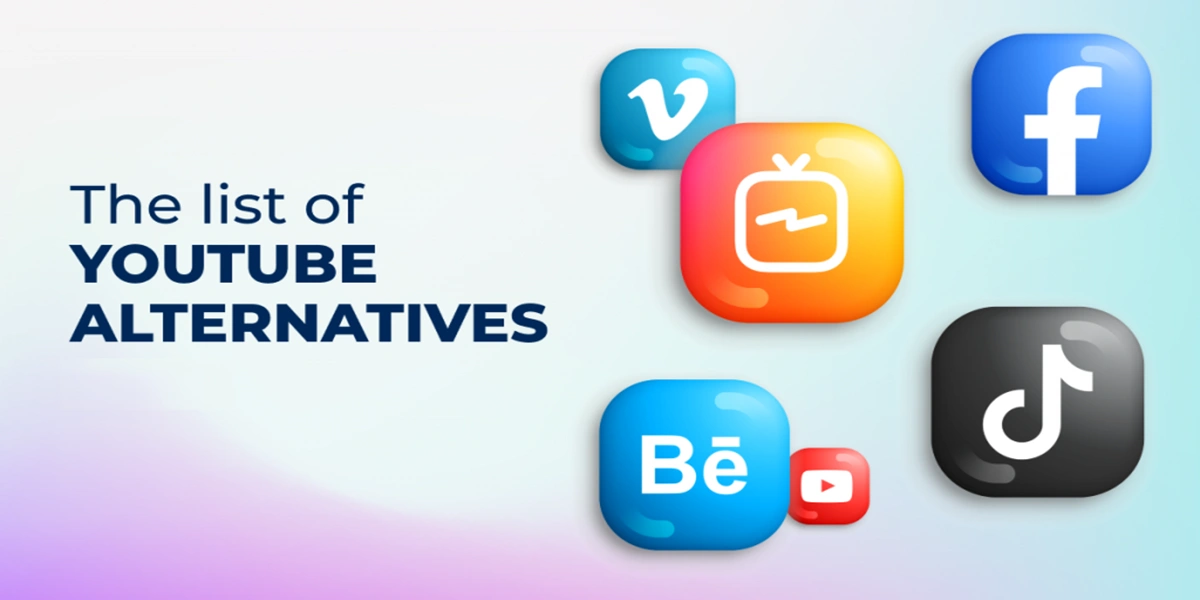Top YouTube Alternatives: The digital video landscape is experiencing unprecedented transformation in 2025, with creators and viewers actively seeking alternatives to YouTube’s dominance. While YouTube maintains its position as the world’s largest video platform with over 2 billion monthly users, emerging platforms are rapidly gaining traction by offering unique features, better monetization models, and specialized communities that cater to specific content niches.
The Rise of Video Platform Diversification
The demand for YouTube alternatives stems from various factors including stricter content policies, intense competition, and evolving creator monetization needs. As the platform becomes increasingly saturated, content creators are exploring diverse options to reach their audiences and maximize revenue potential. Recent data shows that 82% of online content is expected to be video by 2025, making platform selection more critical than ever for success.
Top YouTube Alternatives Gaining Momentum in 2025
TikTok: The Short-Form Video Giant
TikTok has revolutionized video consumption with its vertical, bite-sized format that appeals to younger demographics. The platform has surpassed 2 billion monthly active users and continues expanding beyond its initial short-form focus, now supporting videos up to 10 minutes in length. Its sophisticated algorithm ensures rapid content discovery, making it possible for new creators to achieve viral success within days.
Key Features:
- Advanced editing tools with AR filters and effects
- Duet and collaboration features for interactive content
- Creator Fund and live streaming monetization
- Highly personalized content recommendations
Vimeo: The Professional’s Choice
Vimeo positions itself as the premium alternative for filmmakers, businesses, and creative professionals. Unlike YouTube’s ad-heavy model, Vimeo offers ad-free viewing experiences and supports up to 8K resolution for paid users. The platform emphasizes quality over quantity, attracting creators who prioritize artistic expression and professional presentation.
Advantages:
- High-quality video playback with minimal compression
- Advanced privacy controls and password protection
- Direct monetization through rentals and subscriptions
- Custom video players for embedding
Rumble: The Free Speech Platform
Rumble has experienced explosive growth with 68 million monthly active users and record revenue of $30.2 million in Q4 2024. The platform appeals to creators seeking fewer content restrictions and positions itself as a censorship-resistant alternative. Rumble’s recent $775 million investment from Tether demonstrates its growing market confidence.
Notable Growth Metrics:
- 48% year-over-year revenue increase
- Strategic partnerships including official White House channel
- Expanded cloud services and advertising platform
- Integration of cryptocurrency payments
Twitch vs. Kick: The Live Streaming Battle
Twitch remains the dominant live streaming platform with over 2 million average concurrent viewers, primarily focused on gaming but expanding to include music, art, and lifestyle content. However, Kick is emerging as a serious competitor by offering creators a 95% revenue split compared to Twitch’s 50%.
Kick’s Advantages:
- Superior creator revenue sharing model
- More relaxed content policies, including gambling streams
- Lower partnership requirements for monetization
- Direct tipping system with minimal platform fees
Emerging Niche Platforms Making Waves
Lemon8: The Lifestyle-Focused Platform
Developed by ByteDance (TikTok’s parent company), Lemon8 combines elements of Instagram and Pinterest, focusing on lifestyle content including fashion, beauty, food, and wellness. The platform has gained significant traction, particularly in Thailand, which accounts for over half its traffic.
Unique Features:
- Aesthetic-driven content curation
- Multi-language support for global audiences
- Product tagging capabilities for e-commerce integration
- Tutorial and guide-focused content ecosystem
Odysee: The Decentralized Alternative
Odysee operates on blockchain technology, offering cryptocurrency-based monetization and complete content ownership. Built on the LBRY protocol, it provides creators with unprecedented control over their content while maintaining peer-to-peer distribution.
Key Benefits:
- Decentralized content storage and distribution
- Cryptocurrency rewards based on engagement
- No traditional advertising model
- Censorship-resistant infrastructure
Dailymotion: The International Player
Often called “YouTube’s little cousin,” Dailymotion offers similar functionality with looser copyright restrictions. The French-based platform provides familiar interface design while serving diverse international audiences, particularly in Europe and Asia.
Platform Selection Criteria for 2025
Monetization Models
Modern creators prioritize platforms offering multiple revenue streams. While YouTube provides ad revenue, memberships, and Super Chat, alternatives like Kick offer higher percentage splits, and platforms like Vimeo enable direct sales and subscriptions.
Content Policies and Creative Freedom
Platforms vary significantly in content moderation approaches. Rumble and Kick promote fewer restrictions, while Vimeo emphasizes professional quality standards. Creators must align platform policies with their content strategy and brand values.
Audience Demographics and Discovery
Each platform attracts distinct user demographics. TikTok dominates among Gen Z users, LinkedIn Video targets professionals, and Twitch appeals to gaming enthusiasts. Understanding audience preferences is crucial for content strategy success.
Future Trends Shaping Video Platforms
AI-Powered Personalization
Artificial intelligence drives 30% improvements in watch time through sophisticated recommendation systems. Platforms investing in AI curation, like Netflix and YouTube, maintain competitive advantages in user retention and content discovery.
Short-Form Content Dominance
90% of consumers watch short-form videos daily, driving platforms to prioritize bite-sized content. YouTube Shorts, Instagram Reels, and TikTok lead this trend, with video content generating 49% faster revenue growth compared to traditional formats.
Live Commerce Integration
42% of consumers prefer video-based shopping experiences, prompting platforms to integrate e-commerce features. Live streaming shopping events and product demonstrations are becoming standard platform offerings.
Choosing Your Platform Strategy
Success in 2025’s video landscape requires multi-platform distribution strategies. Rather than relying solely on YouTube, creators should consider platform-specific content optimization and cross-promotion techniques. Emerging platforms often provide better visibility for new creators due to less saturated competition.
Strategic Recommendations:
- Diversify across 2-3 complementary platforms
- Tailor content formats to platform preferences
- Monitor audience engagement metrics closely
- Experiment with platform-specific monetization features
Conclusion: The video platform ecosystem in 2025 offers unprecedented opportunities for creators willing to explore beyond YouTube’s established dominance. From TikTok’s viral potential and Rumble’s creator-friendly policies to Vimeo’s professional focus and emerging blockchain platforms, content creators have diverse options to build engaged audiences and sustainable revenue streams.
Read also: The unified process in software engineering






